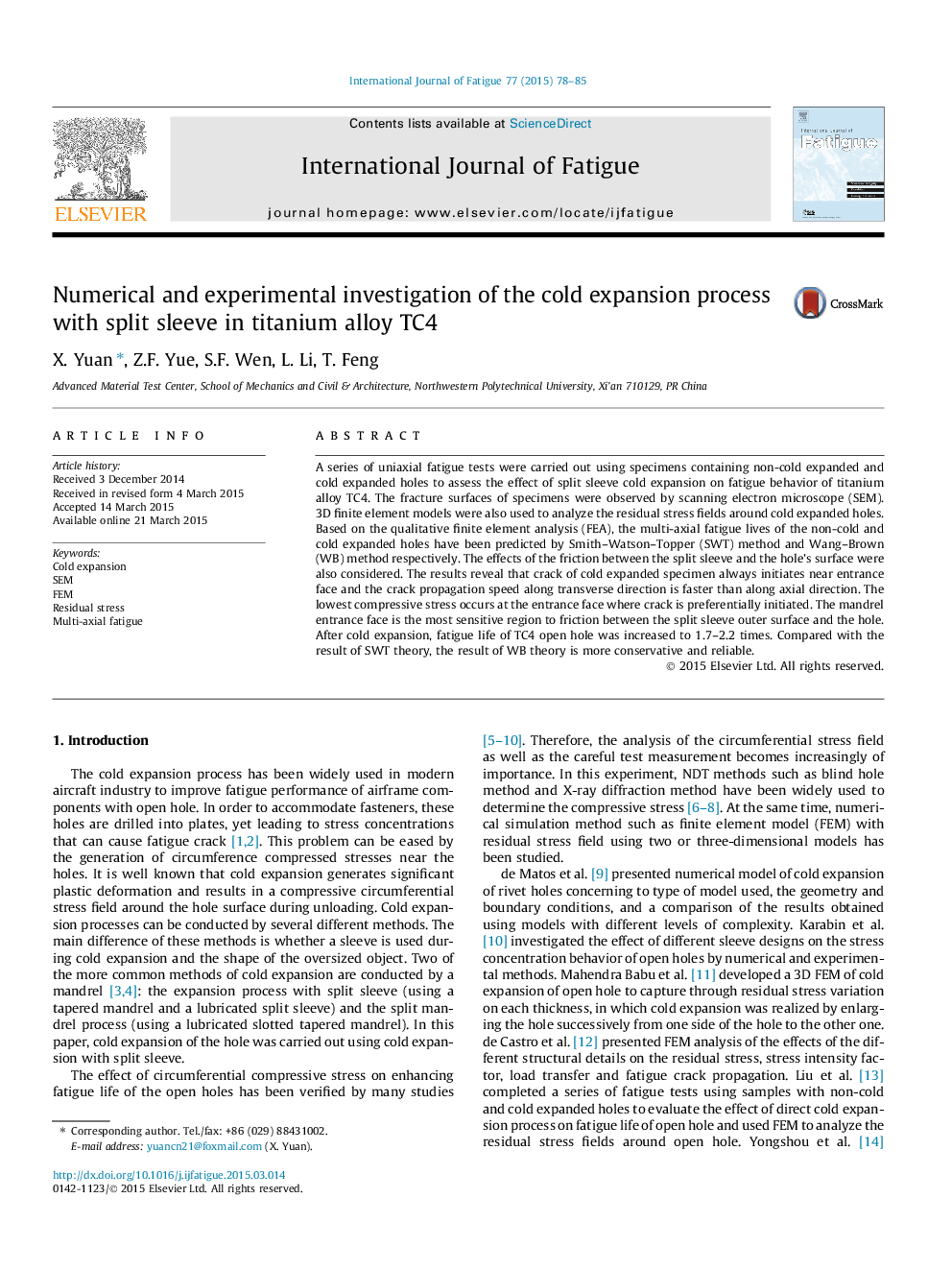| Article ID | Journal | Published Year | Pages | File Type |
|---|---|---|---|---|
| 777594 | International Journal of Fatigue | 2015 | 8 Pages |
•The fatigue lives of cold expanded hole of titanium alloy TC4 were increased to 1.7–2.2 times.•The crack of cold expanded samples preferentially initiated near the entering face.•The circumferential residual compressive stresses were not uniform in thickness direction.•The mandrel entrance face was the most sensitive region to friction.•The critical plane approach in estimating the fatigue life was used.
A series of uniaxial fatigue tests were carried out using specimens containing non-cold expanded and cold expanded holes to assess the effect of split sleeve cold expansion on fatigue behavior of titanium alloy TC4. The fracture surfaces of specimens were observed by scanning electron microscope (SEM). 3D finite element models were also used to analyze the residual stress fields around cold expanded holes. Based on the qualitative finite element analysis (FEA), the multi-axial fatigue lives of the non-cold and cold expanded holes have been predicted by Smith–Watson–Topper (SWT) method and Wang–Brown (WB) method respectively. The effects of the friction between the split sleeve and the hole’s surface were also considered. The results reveal that crack of cold expanded specimen always initiates near entrance face and the crack propagation speed along transverse direction is faster than along axial direction. The lowest compressive stress occurs at the entrance face where crack is preferentially initiated. The mandrel entrance face is the most sensitive region to friction between the split sleeve outer surface and the hole. After cold expansion, fatigue life of TC4 open hole was increased to 1.7–2.2 times. Compared with the result of SWT theory, the result of WB theory is more conservative and reliable.
